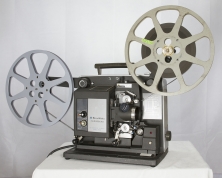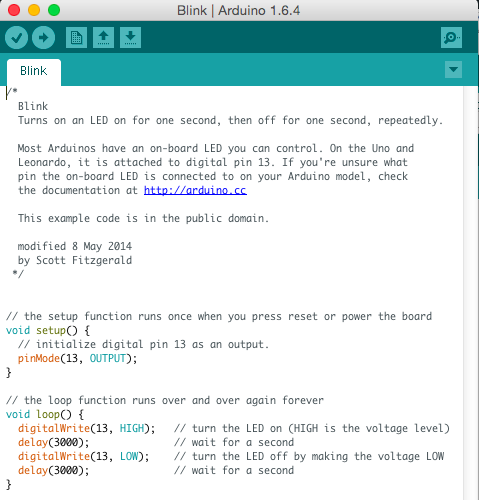A 16mm Education
 My elementary school days were the 1960s and back then seeing a film in class was a big deal. Those 16mm educational films often left a bigger impression on me than the books and lessons. A decade or so later and I was the teacher in the classroom and I became very good at threading those old 16mm projectors that often ate up the film.
My elementary school days were the 1960s and back then seeing a film in class was a big deal. Those 16mm educational films often left a bigger impression on me than the books and lessons. A decade or so later and I was the teacher in the classroom and I became very good at threading those old 16mm projectors that often ate up the film.
Television as an educational tool was pretty rare. I recall my fellow students sitting on the floor of the gym in 1962 to watch one small television set as John Glenn became the first American to orbit the Earth.
A bit more than a decade later I was threading one of those 16mm projectors as a teacher to show my students films. Some teachers took advantage of using films a bit too often. We called them "plans in a can" and they were popular emergency plans in case you were absent without warning or on a day before vacation.
I was pretty frugal in my use of films, but I also taught a course on film and video production, so I think I had legitimate reasons to show films. Before there were home video players, 16mm films were the only way to do it.
The Sony Betamax hit the U.S. in 1975, and my school bought a VHS videocassette recorder (VCR) in 1977 when it was edging out the Betamax for the home video market. That VCR was something I used more and more, though my students were still shooting their own video on reel-to-reel VTRs (videotape recorders).
Sony changed that with their 1983 Betamovie cassette camcorder. My school bought a full size VHS camcorder and so did I. My first home movies of my newborn son were recorded with a video camera plugged into a VHS deck.
But I have very fond and surprisingly vivid memories of those old 16mm films that I saw a s a kid in school.
Many of them have emerged online. I assume that many of these films have had their copyright lapse, or maybe the companies that produced them have gone out of business or just don't care about their use any more.
I recall this film on "Lunchroom Manners" as one I saw in school. I also recall Pee Wee Herman using part of it in one of his shows. Watching "Mr. Bungle" in school settings today reminds me of my own school and the kids look like a lot I did then and my fellow students. Since I have no film and video of my own early days, these are like home movies.
I can imagine teachers in the late 1940s and 1950s showing in a health class films like the 1951 "Going Steady." (It doesn't portray going steady as a good idea.) And I'm not sure how teenagers in 1949 would have viewed the tips in Dating Do's and Don'ts. These were made by Coronet Instructional Films, which produced hundreds of films for the school market.
Public domain films from the Library of Congress Prelinger Archive and Archive.org can be a real trip down memory lane for people who came of age in the 1940s through the 1970s.
But the films I saw in school that left the biggest impression on me were the ones about science. Many of them were well made and from Hollywood producers and studios. I vividly recall "Our Mr. Sun," a film directed by Frank Capra who is best known for It's a Wonderful Life, Mr. Smith Goes to Washington and many others.
That film launched the Bell System Science series. My father worked at Bell Labs in New Jersey then, so I thought then that he might have had some vague connection to these films (he didn't). It was the time time of the space race with Russia and an early version of STEM education that we all needed to know more about science. My father was determined I would be the first in the family to attend college and really wanted me to become an engineer.
With animation and live action, "Our Mr. Sun" was really well-made for the time. Capra had been producing documentaries for the Army during WWII such as the Why We Fight series and this documentary side business continued after the war. I know I saw that film multiple times in school, but this Technicolor beauty was originally telecast in 1956 and 1957 to 9 million homes and then some 600 16mm prints were distributed to schools and community organizations through the Bell Telephone System film libraries.
Another film I recall was on the atom. I grew up in that "atomic age" when the fear of nuclear war was very real. The film I recall was produced by Walt Disney Educational Media. Walt Disney began hosting his own television show for ABC in 1954. In exchange for a weekly hour-long Disney television program, ABC was funding some of the construction of Disneyland. The show was originally named Disneyland but went through later incarnations as Walt Disney Presents, Walt Disney's Wonderful World of Color, The Wonderful World of Disney etc. All in all they ran for an amazing 54 years.
The "Our Friend the Atom" was a pro-nuclear energy film but it did compare atomic energy to a genie in a bottle, both of which are capable of doing good and evil.
Not all the films were about hard science and another one I recall must have had some impact on my decision to go into the humanities and major in English. Another from the Bell Science series produced by Frank Capra was "Alphabet Conspiracy" which was the story of the science of language and linguistics. The premise was a plot to destroy the alphabet and all language and it featured the very odd Hans Conried.
The growth of television after WWII scared many parents and educators. Kids were watching a lot of TV and, like film and comic books before it, the fear was that it would rot their minds. The same cry was heard with videogames, the Internet and now with smartphones, which contain all those formats.
I wrote my Master's thesis on the influence of television on children in regard to violence and isolation. There is no doubt that all this media influenced several generations, but I'm not sure that it rotted any brains. I suspect it inspired many kids.
This post first appeared at One-Page Schoolhouse



 for Christmas. (Kits run about $100-150 but you can buy an
for Christmas. (Kits run about $100-150 but you can buy an  for about $20 if you're already working with maker electronics and coding.) If you are an adult, kid, parent or teacher, this first (with more to come?) post is a nice intro into this popular maker tool.
for about $20 if you're already working with maker electronics and coding.) If you are an adult, kid, parent or teacher, this first (with more to come?) post is a nice intro into this popular maker tool.